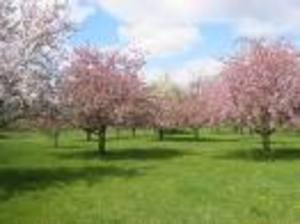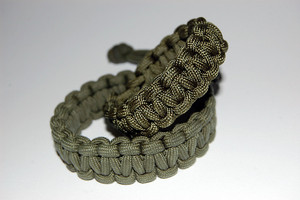Many people choose to plant their own fruit trees to enjoy fruit straight from the plant. One main benefit to growing your own fruit trees is that the fruit will have fewer pesticides and other chemicals. Apples, pears, cherries, plums, apricots and peaches trees will all grow throughout the United States.
When planting a backyard orchard, you will need to choose a spot, select which fruit trees you would like to plant and learn the basic care of each fruit. Once you have completed these steps you can plant your trees and enjoy the fruit for many years to come!
Not much preparation needs to be done in your orchard site. Weeds will need to be mowed and ideally the soil will be rich in organic matter and well drained. You will not want to plant your orchard trees in soil that is heavy and full of clay, nor in soil that is very sandy and dry. Fruit trees require healthy soil to produce fruit and maintain their own health. You can amend the soil specifically for each tree during planting time by adding peat moss, fertilizer or compost to the hole you have dug for the tree. Work the amendments deep into the soil with a spade and backfill will the amended soil as well. You will want to choose a site for your backyard orchard that receives full sun, and is set apart from any other trees or forest.
Apple trees are a special treat for any backyard gardener and will bear fruit for many years. There are so many different varieties and colors including red, yellow and green apples. The most common apple tree varieties include: McIntosh, Cortland, Jonathan, Red Delicious and Granny Smith. There are several disorders that apples are prone to and include: apple scab, cedar-apple rust, and powdery mildew. To have a successful apple harvest you may need to spray your apple trees 10-12 times through out the growing season. There are many commercially produced sprays that are made specifically for apples and the diseases that affect them. There are also many varieties that have been developed that have a greater resistance to diseases and can be purchased through a magazine nursery such as Gurney’s. It is best to plant multiple apple trees for cross-pollination and optimum health of the plants.
Pear trees are another common orchard fruit across the USA. The most common disease among pear trees is fire blight. Fire blight is very difficult to grow and you should really only plant varieties that are resistant to fire blight. Fire blight is a bacterial disease that is very serious and will destroy the fruit of the tree. There are two main pear types: European and Asian. European pears should be picked at a green state and allowed to ripen indoors. This will prevent the pears from becoming grainy in texture. Asian pears are less hardy that European pears and therefore are not grown as often. Pear trees require the planting of more than one cultivar for optimum cross-pollination. Without cross-pollination the tree will not be able to produce fruit.
Cherry trees are also a treat for a backyard orchard. Cherry trees require soil that is very well drained as they will not tolerate wet soil. In moist conditions the trees will suffer from cherry leaf spot which is a fungal disease that can cause the tree to loose all it’s leaves. Cherry trees are self-fruitful so only one cultivar needs to be planted. Cherries come in sour, sweet and bush-like varieties. The sweet cherries are not very hardy and can only be successfully grown in the southern half of the United States.
Plums grow in the wild throughout many parts of the United States. Nursery stock plum trees come from European and Japanese varieties. The Japanese plum trees are only hardy in the south half of the country, while the European varieties are a little hardier. European varieties are self-fruiting, but will produce more fruit if multiple cultivars are planted. When purchasing your trees you will need to be sure to check out the hardiness rating and be sure they are compatible with the growing environment that you are going to plant them in. Plums are a bit hardier against diseases and insects, but still require well drained soil to prevent overly moist growing conditions in which mildew and fungus will attack the tree and its fruit.
Peaches, nectarines and apricots can also be grown in your backyard orchard. They are not very hardy in many areas of the United States, but there have been many new varieties introduced in the past few years that boast of extra hardiness. They are all very susceptible to insects and bacterial disease and do not tolerate wet soil at all. The trees are expected to be very short lived, at about 6 years of life expectancy. The trees do not bear very well, and sometimes may only bear fruit once in a 4 year time period. The trees will require extensive spray to control pests that will attack the plant.
All fruit trees will come with a very specific label that will describe the care of the individual tree. It is recommended to stack your fruit trees so that they will grow straight and the stake will help maintain an upright position while the tree is heavy with fruit. Mulching to control weed growth is very important to your orchard and will also help with moisture retention. Adequate spacing should be left between trees for ample air movement to prevent the spread of fungus and mold across the orchard.
Once you have planted your trees you can look forward to enjoying the delicious fruits of your labors! An orchard will create a beautiful scene in the spring when the trees are in full bloom that will be picture worthy. If you love fruit and have a space to plant some trees, I suggest starting with a few apple trees and discovering how exciting a backyard orchard can be!



